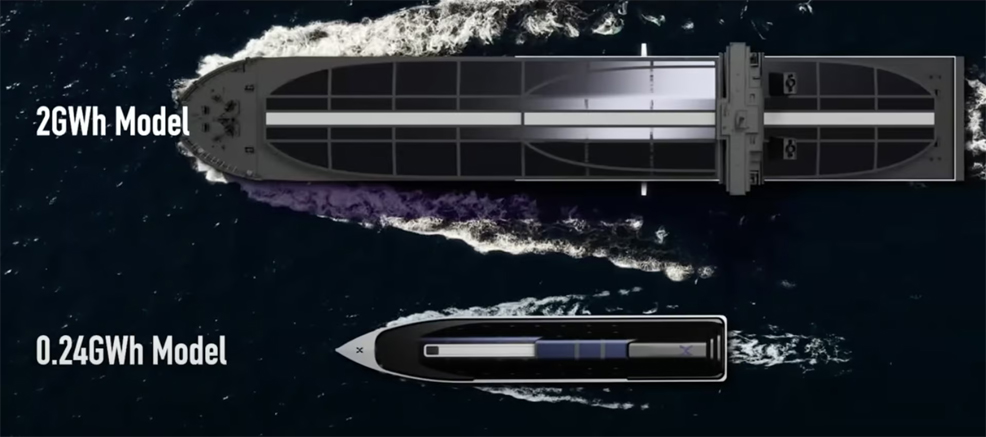
12th June 2023 World's first "battery tanker" to debut in 2026 Japanese company PowerX has unveiled the detailed design of the first-ever "Battery Tanker" at the Bariship International Maritime Exhibition held in Imabari City, Ehime Prefecture, Japan.
For over a century, oil tankers have been a familiar sight on international shipping routes, delivering vital energy sources to power our civilisation. But as the world shifts away from fossil fuels, they could soon be joined by new and futuristic-looking vessels bringing cleaner forms of energy. The first of these "battery tankers" is now being developed in Japan. PowerX, the company behind it, has secured $70m since its founding in March 2021 and is seeking business partners worldwide for this new technology. Its first detailed designs have been showcased and a partnership agreement has been signed with Kyushu Electric Power Co, as well as the City of Yokohama, to pursue the novel concept and achieve carbon-neutral ports. Construction of the inaugural ship "X" is planned for completion by 2025, with domestic and international field testing to commence in 2026. This electric propulsion vessel boasts a length of 140 metres (459 ft) and will be equipped with 96 containerised marine batteries providing a total capacity of 241MWh. The onboard battery system is based on a proprietary module design, featuring safe and reliable lithium iron phosphate (LFP) cells that ensure a lifespan of over 6,000 cycles. Additionally, the system is highly scalable, allowing for installation of extra batteries – this could enable larger vessels such as the company's planned Power Ark 1000, featuring a 150-metre-long design; or even larger sizes like the 220-metre Power ARK 3000, depending on specific mission needs.
Ship X (and presumably the larger variants) will also include real-time monitoring of the batteries, charging controllers, and power conversion, with emission control and fire suppression mechanisms to ensure safety. All batteries will be manufactured in-house in Okayama Prefecture and are scheduled to obtain international ship certifications and applicable standards, undergoing rigorous testing to meet the strictest conditions. When fully operational, battery tankers will store and transport surplus electricity generated from renewable sources like wind or solar. Decommissioned or idle thermal power plants located near ports could be retrofitted into charge/discharge points for the new ships, where the power is transmitted to users via grid connections on the land, enabling further effective use of renewable energy. Moreover, areas with high potential for renewable energy generation are often distant from urban areas and regions with high power demand. Strengthening of transmission infrastructure becomes essential in such cases. Given the current energy density of lithium-ion battery cells, the battery tanker is an optimal solution for short-distance maritime power transmission from land to land, complementing existing inter-regional grid transmission lines.
As the energy density of batteries improves and their cost decreases, longer-distance maritime transmission from offshore wind power plants to the land will become feasible. Battery tankers offer a practical solution, especially in Japan, which is highly prone to earthquakes and has deep-sea surroundings. The ship-based solution resolves issues such as extended downtime from undersea cable malfunctions and repairs and the high costs associated with ultra-high voltage connections and substations. Battery tankers could enable the installation of offshore wind farms in areas where undersea cable deployment was once challenging. Using maritime power transmission via battery tankers can address various challenges associated with offshore wind power – not only in Japan, but also contributing to the wider adoption of renewable energy worldwide.
Comments »
If you enjoyed this article, please consider sharing it:
|









